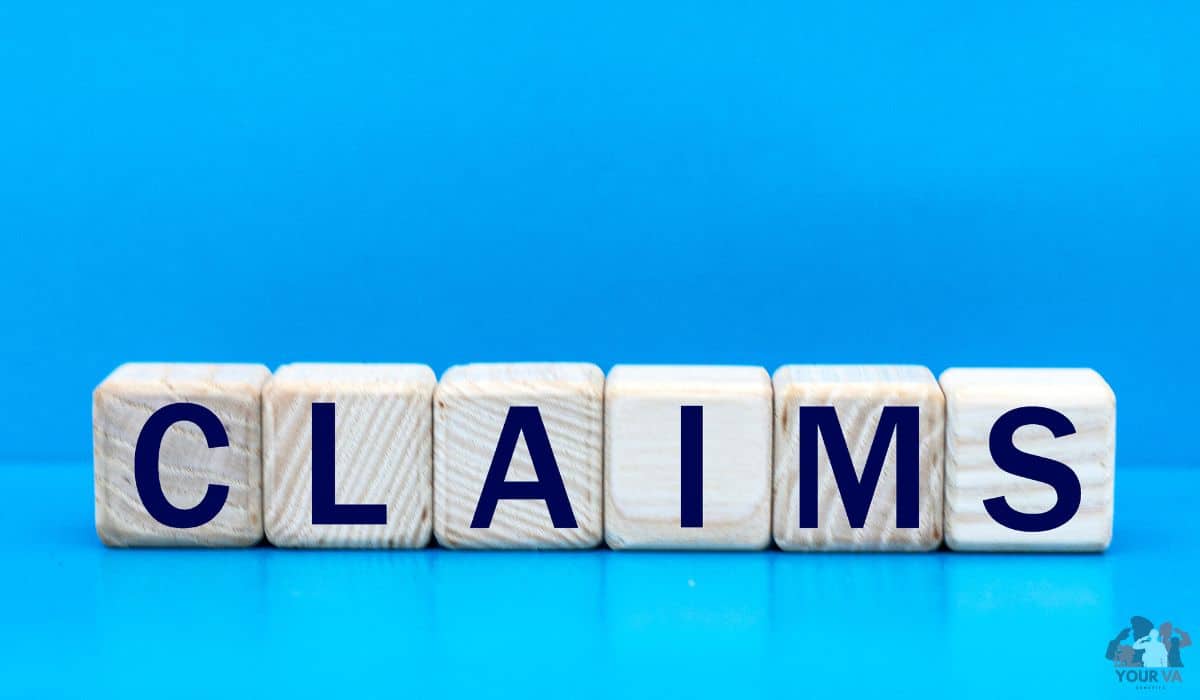Good news for veterans transitioning to civilian life: the VA is delivering benefits faster than ever. Just last year, over 1.1 million veterans and survivors received support, with a record $137 billion distributed, proof that disability compensation is reaching those who earned it.
If you’re wondering how to file VA claim after discharge, you’re in the right place. This guide cuts through the confusion, offering a clear path to secure the VA disability benefits connected to your military service.
From our experience, taking that first step is often the biggest hurdle. Many feel uncertain where to begin, especially if discharged months or even years ago. We’re here to show you it’s absolutely achievable.
If you’re still serving, our guide on the VA fully developed claim process might be your starting point. Stay tuned for our post on the process for VA disability claims. This article is part of our comprehensive resource on Initial VA disability claims filing.
Key Points
- You can file a VA claim after discharge at any time – there’s no time limit.
- Eligibility requires an “other than dishonorable” discharge and a current disability linked to your military service (service connected condition).
- Gather crucial documents: DD-214, service medical records, current medical evidence, and buddy statements.
- File online at VA.gov for speed, describing your disability and symptoms in detail.
- Consider the BDD program if still on active duty to collect VA benefits sooner.
- VA claims take time; be prepared for the C&P exam and understand disability ratings.
- Seek accredited help if your claim is denied or the process feels complex.
- Filing sooner secures your effective date and potential back pay.
Understanding Your Eligibility to File VA Claim After Discharge
Wondering if you qualify for VA disability compensation? Let’s clear that up. The core requirements are pretty straightforward. First, you must be a veteran who was discharged under conditions other than dishonorable.
Second, you must have a current physical or mental disability. Third, that disability must be connected to your military service – this is called a service connected condition.
Think injuries from training, illnesses that started during active duty or inactive duty training, or conditions made worse by your military service.
Here’s crucial news: Most veterans think they missed their chance years ago. That’s simply not true. There is no time limit to apply for VA disability benefits after leaving the service. Whether you were discharged months ago or decades ago, you can still file a claim.
Your effective date for potential back pay usually goes back to when the VA received your application or when your disability began, whichever is later.
What about your discharge type? It matters, but it’s not always a barrier. Honorable and General discharges typically qualify. Even some Other Than Honorable discharges might be eligible. The key is whether your service was deemed “under conditions other than dishonorable” by law.
Don’t assume you’re out of luck. Check your DD-214 carefully.
Essential Documents You Need Before Filing Your Disability Claim
Getting your paperwork ready is key to a smooth claim. Think of these documents as your proof for the VA. Gathering them upfront makes everything faster. Here’s what you absolutely need:
- Your DD-214 (Certificate of Release or Discharge from Active Duty): This proves your military service and character of discharge.
- Service Medical Records: These show when and where an injury, illness, or event happened during your service. They are vital proof for your service connected condition.
- Medical Evidence of Your Current Disability: You need a current diagnosis from a doctor. This includes treatment records and doctor’s statements detailing your symptoms now.
- Supporting Statements (Buddy Letters): Statements from family, friends, or fellow service members who witnessed your condition or event can be powerful evidence.
Missing some service medical records? Don’t panic. You can request them from the National Archives. Ask your private doctors for copies of your current treatment records.
Gathering evidence might feel like a chore, but it builds a strong case. Many veterans find organizing everything in a simple folder helps. Keep copies of everything you submit. A well-organized disability claim moves through the system more efficiently.
Having all this ready before you hit submit on your VA claim online saves significant time later. It helps you get your VA benefits sooner.
Step-by-Step Process to File Your VA Claim After Military Service
Ready to actually file a VA claim? Let’s walk through the VA.gov online process together. First, gather those essential documents we talked about. Log into VA.gov and find the disability claim application section.
Start a new claim. You’ll select the type of benefit you’re seeking, like VA disability compensation. Next, carefully add each service connected condition you’re claiming.
Describing your condition clearly is vital. Don’t just say “back pain.” Explain: “Chronic lower back pain starting during field exercises in 2023, diagnosed as herniated disc, causes daily stiffness and limits lifting.”
Be specific about symptoms, when they started, and how they impact you now. This detail links your disability to your service.
Common mistakes trip up many:
Not uploading all supporting evidence upfront. These errors cause delays. Avoid them for benefits sooner.
Prefer paper? You can mail forms (VA Form 21-526EZ). Need help filing? Visit a VA Regional Office or use an accredited VSO. Online is usually fastest, but choose what works for you.
Timing Your Claim: BDD Program vs. Post-Discharge Filing
When you file a claim significantly impacts your effective date and potential back pay. If you’re still on active duty, listen up! The BDD program (Benefits Delivery at Discharge) is your golden ticket.
File your claim 180 to 90 days before separation. You’ll likely get a decision within days of leaving the service, meaning disability payments start almost immediately. That’s getting pension benefits sooner, including VA health care.
Missed the BDD window? You can still file a VA claim anytime after discharge. Your effective date is generally when the VA gets your application. Back pay goes back to that date once approved. Filing sooner means getting compensation sooner.
Pre discharge claim (BDD) Pros:
- Decisions arrive fast post-discharge.
- Easier access to service medical records and exams.
- Potential for immediate benefits upon separation.
- Post-discharge filing makes sense if:
- You’re outside the BDD window.
- New service connected conditions appear later.
- You need more time to gather evidence.
For new or worsening certain conditions diagnosed after your initial claim, file a supplemental claim. Don’t wait if something new comes up related to your service.
What to Expect After Filing: Timeline and Next Steps
You hit submit. Now what? Let’s map out the journey ahead. Processing VA claims takes time. Current average time frames range from months to over a year for complex cases. Patience is key, though the VA is working to speed things up.
You’ll likely be scheduled for a Compensation & Pension (C&P) exam. This crucial medical evaluation confirms if you’re eligible for VA disability and its connection to service. Be honest and detailed about your symptoms during the exam.
Your disability rating (0% to 100%) is then determined based on severity and how much it impacts your daily life. This rating directly affects your monthly compensation amount.
What if your claim is denied? Many veterans face this hurdle. Don’t give up! You have strong appeal options:
- Supplemental Claim: Submit new, relevant evidence the VA didn’t previously consider.
- Higher-Level Review: Ask a senior VA reviewer to re-examine your case based on the existing record.
- Board Appeal: Take your case directly to the Board of Veterans’ Appeals (BVA).
Appeals have deadlines, so act promptly if denied. Once approved, disability payments start. Your monthly amount depends entirely on your combined disability rating and dependents.
For instance, a common service connected condition like high blood pressure might be rated at 10% or 20%.
Getting Help When You Need It Most
Navigating the VA disability system can feel complex. When is it smart to seek help? Consider professional assistance if:
- Your initial claim was denied.
- You have multiple service connected conditions to document.
- Gathering evidence or describing your disability feels confusing.
- You simply want guidance to maximize your potential rating and benefits.
Going it alone works for some, but expert coaching often makes a real difference. Accredited professionals understand the nuances. They know how to properly present medical evidence and argue for the correct disability rating.
This support significantly boosts your chance of receiving your full disability compensation faster.
Look for reputable services that are VA-accredited (like VSOs, agents, or attorneys), offer clear fee structures (often contingency-based, meaning they only get paid if you win back pay), and have proven experience. Avoid anyone demanding large upfront fees.
Take Action: Start Your VA Claim Journey Today
Don’t let uncertainty hold you back. Filing your VA claim sooner means locking in your effective date and potentially receiving back pay. Remember, these VA disability benefits were earned through your military service. You deserve this support. Ready to begin? Your clear next steps:
- Gather: Collect your DD-214 and relevant medical records (service medical records & current diagnoses).
- File: Submit your application online at VA.gov for the fastest processing.
- Consider Support: If the process seems daunting, explore help from a VA-accredited representative.
We offer professional support to eligible veterans navigating this process. Getting the disability compensation you deserve is absolutely possible. Take that first step today. Your service connected health matters.
Visit our homepage today to explore your next steps toward getting the support you earned.






